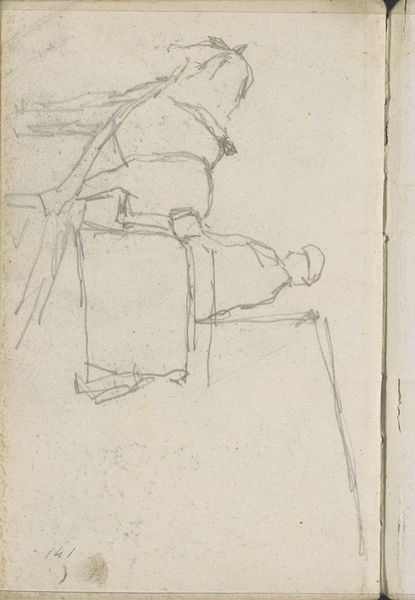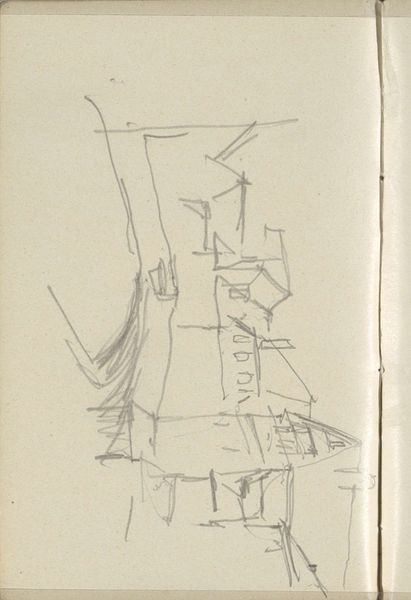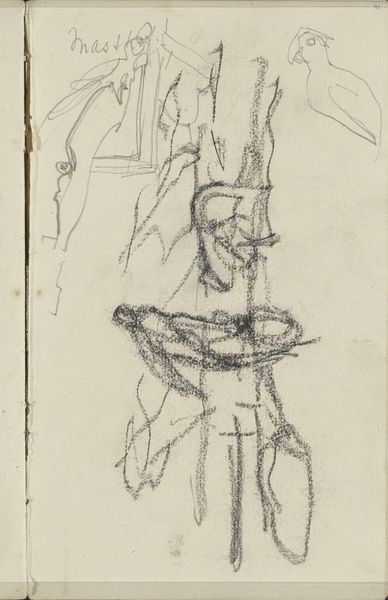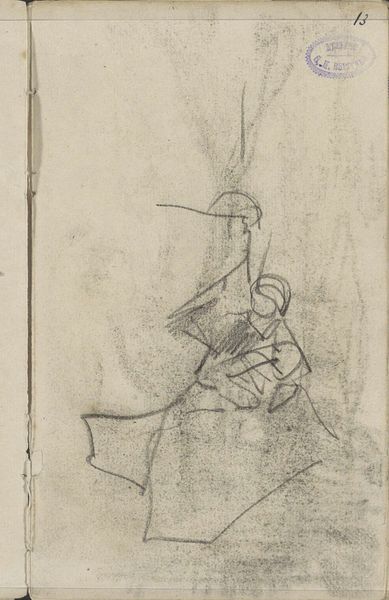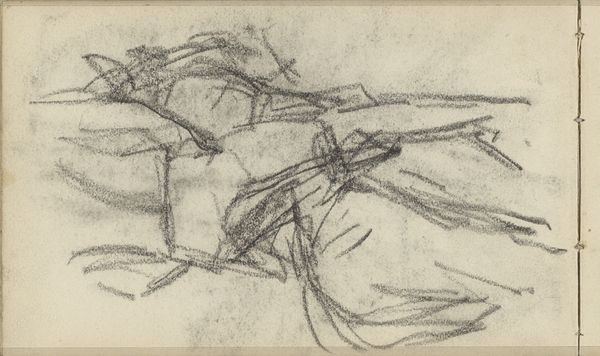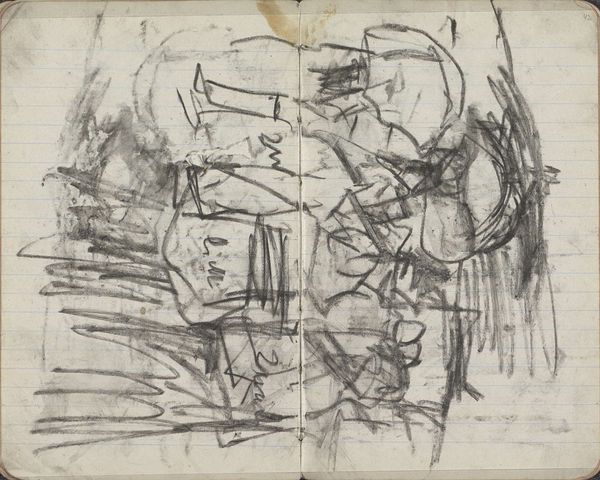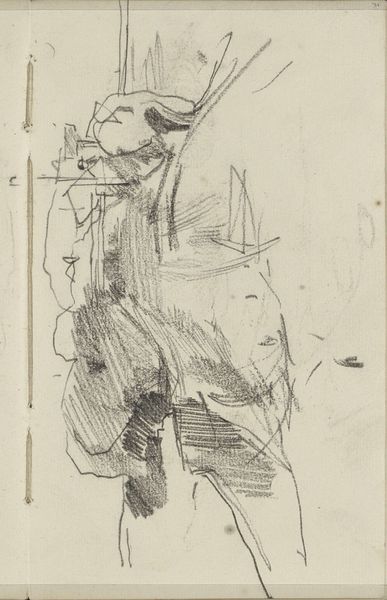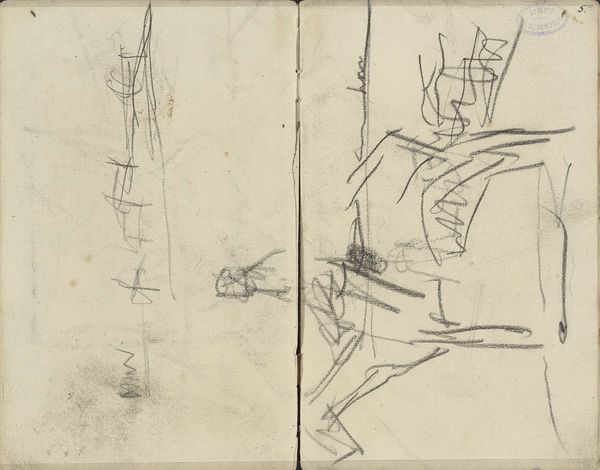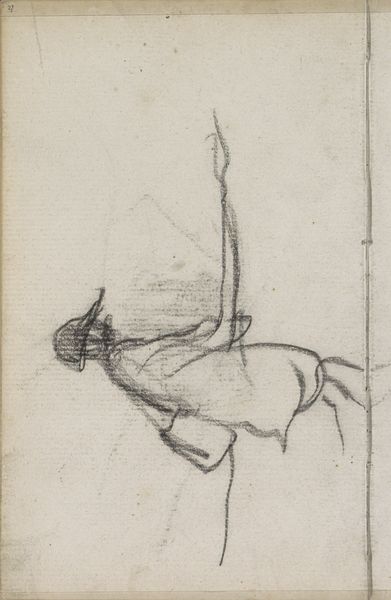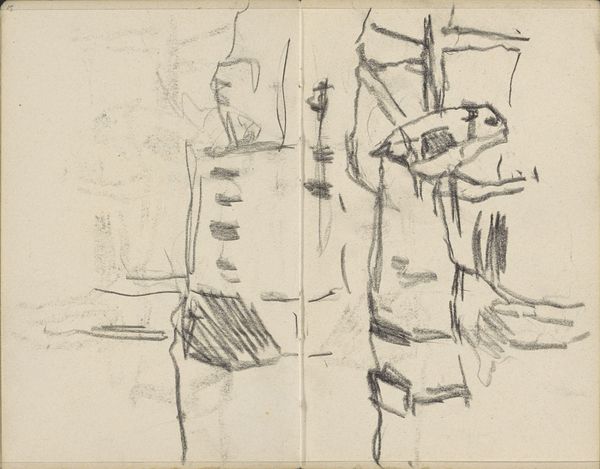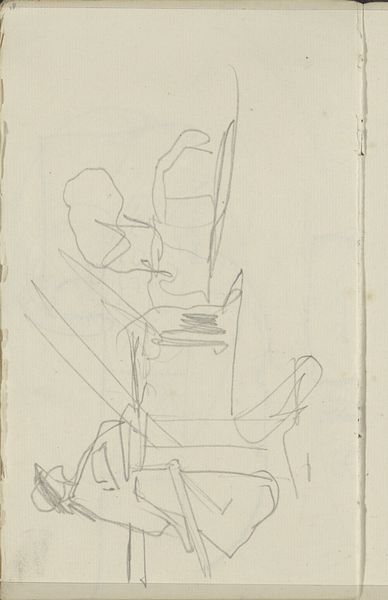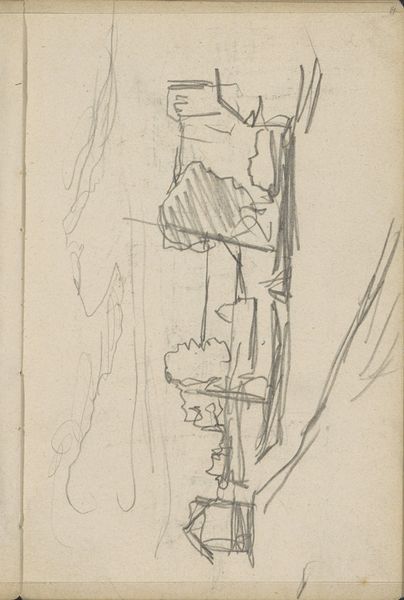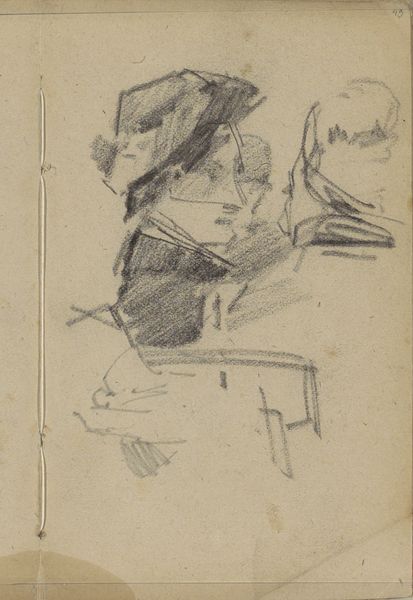
Twee studies van een soldaat, mogelijk een artillerist 1884 - 1886
0:00
0:00
drawing, pencil
#
portrait
#
drawing
#
dutch-golden-age
#
impressionism
#
pencil
#
realism
Copyright: Rijks Museum: Open Domain
Curator: Before us is George Hendrik Breitner's pencil drawing, "Twee studies van een soldaat, mogelijk een artillerist," created between 1884 and 1886, here at the Rijksmuseum. Editor: Oh, immediately I’m drawn in. It's raw, isn't it? Like catching a fleeting thought, two attempts to capture the same subject on the move. The back view of that soldier, he's weighed down, even in the looseness of the lines, his world resting on his shoulders. Curator: That feeling of weight is partly created by the dense, almost frenetic pencil strokes, typical of Breitner’s impressionistic approach to realism. The image offers glimpses, fragments of uniform and accoutrements, enough to hint at military life without glorifying it. We see similar figures reappear throughout Breitner's Amsterdam period, almost becoming symbolic of his views on the working classes, his engagement with city life. Editor: Do you think the sketch captures something more personal as well, perhaps something ambivalent in relation to military life? There's a palpable distance – we’re not invited into the soldier's inner world, we see him only from the back. And there are only hints to an individual—all softened and shrouded by that impressionistic technique. It suggests observation, documentation maybe, not celebration. I sense a weariness embedded within the image, both in subject and artist. Curator: Precisely! Breitner himself avoided military service through cunning strategies, viewing army life as monotonous and restrictive. These sketches resonate then with a subtle critique, focusing on the burden carried, rather than the hero celebrated. Editor: It's a lovely study in understated dissent. This image refuses any heroic interpretation. It offers a visual poem dedicated to those untold stories. What lingers after is the mood, the shadow of an era, the intimate study of those ordinary people at work, rendered through an individual interpretation. Curator: Ultimately, in capturing the everyman—or every soldier in this instance—Breitner preserves a vital aspect of his cultural landscape. Editor: Yes, a shadowy portrait sketched from history, yet brimming with a contemporary melancholy.
Comments
No comments
Be the first to comment and join the conversation on the ultimate creative platform.
